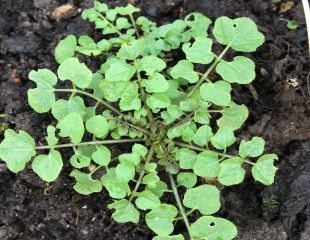
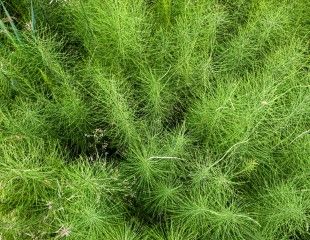
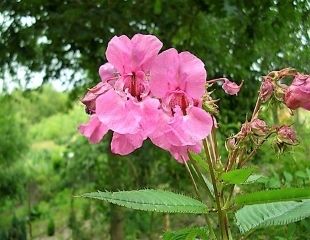
How To Reduce Weeding
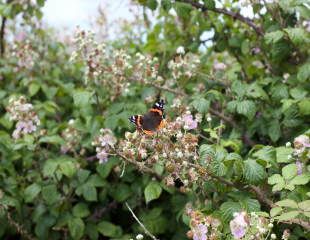
Not many gardeners like weeding, it is more of a necessity than a pleasure. It is also time consuming, which means ways to reduce weeding are ways to get ahead.
Firstly, know your weeds. Some are easy to spot. Above left is an image of the weed Hairy Bittercress, which is very common in gardens. Fortunately, it is easy to remove and not an invasive weed, so not too much trouble.
Contrast with the centre image, which is the deadly Horsetail, a real terror if it gets root and very hard to eradicate.
Brambles are persistent, but wildlife friendly.
Flowering Weeds - The Enemy
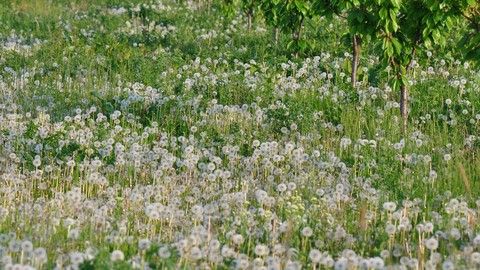
Just like garden flowers, many weeds set seed by which means they multiply. The seeds come from the flowers and, if possible, it is important to remove the seed head before it spreads the seeds. Above is a field of Dandelion flowers full of seed and many of us have seen the seed drifting on the wind on a summer's day. It may look pretty, but it is bad news because each seed can land on the soil and germinate.
The image above right is of very attractive weed, Himalayan balsam, with lovely pink flowers which have seed head which, literally, explode, flinging the seed far and wide to land and germinate.
The tip is if you do not have time to remove the weed, take a few minutes to cut off its head removing the flowers and seeds so you are at least hindering its spread.
Using a Weed Suppressing Membrane
If you want to beat the weeds and reduce weeding to the absolute minimum, a good idea is to lay a weed suppressing membrane. Garden centres sell weed suppressing membrane which are tough woven plastic sheeting. The images below show a border which has a weed suppressing membrane laid on top of the soil, and then covered with a mulch of bark. A membrane can be laid at any stage but it's significantly easier to do this when the border is new, or if you are re vamping it and removing most of the plants and shrubs so the border is clear.
The thick membrane and a layer of bark effectively stop most weeds. If you move into a house with a new garden or are laying out a new border, this is an ideal opportunity to cover the border with horticultural membrane and with bark to reduce garden weeding.
When the border is prepared lay the membrane and to conceal it, as its far from attractive, cover with a layer of bark chippings /topsoil. When you plant, using a sharp Stanley knife or scissors, cut a large cross and fold back to create a planting circle. Plant the shrub into the space and then fold back the membrane and cover with chippings.
The membrane will keep moisture in and weeds out and if you cover the whole border with the membrane, the amount of weeding will be negligible.
The membrane is not really noticeable with a mulch of bark on top and using a membrane will reduce weeding by about 95%. The almost total lack of weeding is the big plus for a membrane. Bark deteriorates over time and will need periodic renewal.
Another plus point is that the blackbirds just love the bark and spend hours rooting around in the border, throwing the bark into the air whilst searching for grubs, and it is great fun to watch.
There are some disadvantages to using a membrane. It is more difficult to plant with a membrane in place, as each time you have to clear off the bark and cut a hole, which means it takes more time. Also, it can restrict the natural spread of some plants as the hole you cut into the membrane is the space for the plant. Those plants which are self seeding cannot seed into the soil so it limits self seeding plants, which may or may not be a disadvantage.
Below image left is a weed suppressing membrane in situ with a hole cut in it to plant through. On the right, I have completed the border with planting and a layer of bark over the membrane.
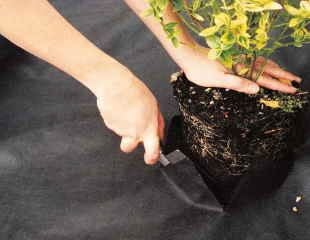
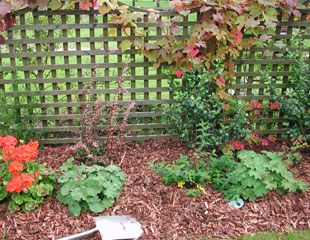
Apply a Mulch
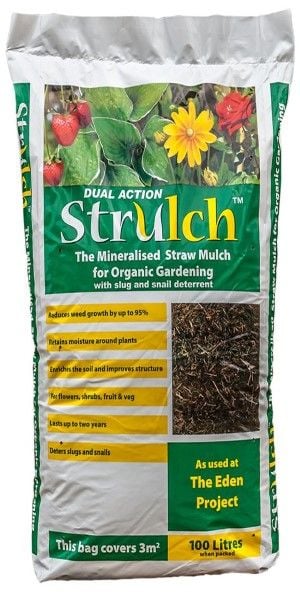
Having carefully weeded the garden to a state of pristine weed hygiene, or even just having done a good tidy up the next step if you have time is to apply a mulch.
Applying a mulch will reward by keeping the weeds at bay for longer, resulting in less routine weeding. An added benefit of mulches are that they retain moisture, add structure to the soil and are a deterrent to slugs and snails.
The mulch illustrated is Strulch, which I like because it is very light to handle which means I can carry bags around the garden easily. It also looks attractive on the soil and is very effective at keeping weeds at bay.
